For a lot of people, gardening is a passion. It can be a great process to relax and get some exercise and fresh air. But one of the most important things you need for gardening is good potting soil. Potting soil is made up of various materials, including organic matter, sand, perlite, and peat moss.
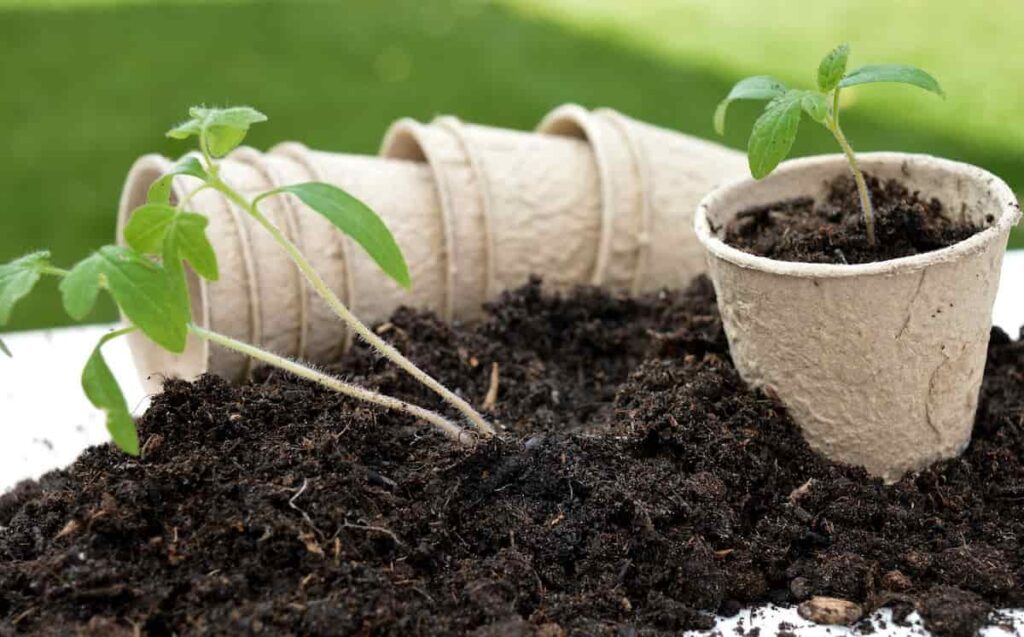
In India, potting soil is not easily available in stores. Making your potting mix at home with some simple ingredients is possible. The soil you have will determine what kind of plants you can grow. If you want to grow plants that require a lot of potting soil, you will need to know how to make it at home. In this article, the below process is about how to make potting soil at home in India.
How to make potting soil at home
What is potting soil?
Soil is one of the most important things for plant growth. The type of soil you use can make or break your garden. That’s why choosing the right soil type for your plants is important. Potting soil is a type of soil that is often used for potted plants. This makes it a good choice for plants that need good drainage. It is also sterile and doesn’t contain harmful bacteria or fungi. You can buy potting soil at most garden stores or make it yourself home.
There are many benefits of using potting soil for plants, including:
- Potting soil is a light and airy mixture that helps roots to grow and breathe.
- Potting soil drains well and does not compact, so it is ideal for potted plants.
- Potting soil warms up quickly in the spring, which helps plants to grow faster.
- Potting soil is easy to find and relatively inexpensive.
- Potting soil can be reused for several years if kept clean and disease-free.
Potting soil mix for container gardening
Below are some essential tips to make a perfect potting mix for your container garden;
- The important thing is to make a potting soil mix for container gardening if the potting mix is well-drained. This is because containers can often get waterlogged, leading to problems with your plants.
- To ensure good drainage, add sand or grit to your potting mix. You should also ensure that the mix is not too dense by adding some perlite or vermiculite. These materials will help to aerate the soil and prevent compaction.
In case you missed it: Controlling Mosaic Viruses in Plants: Chemically, Organically, Symptoms, and Causes
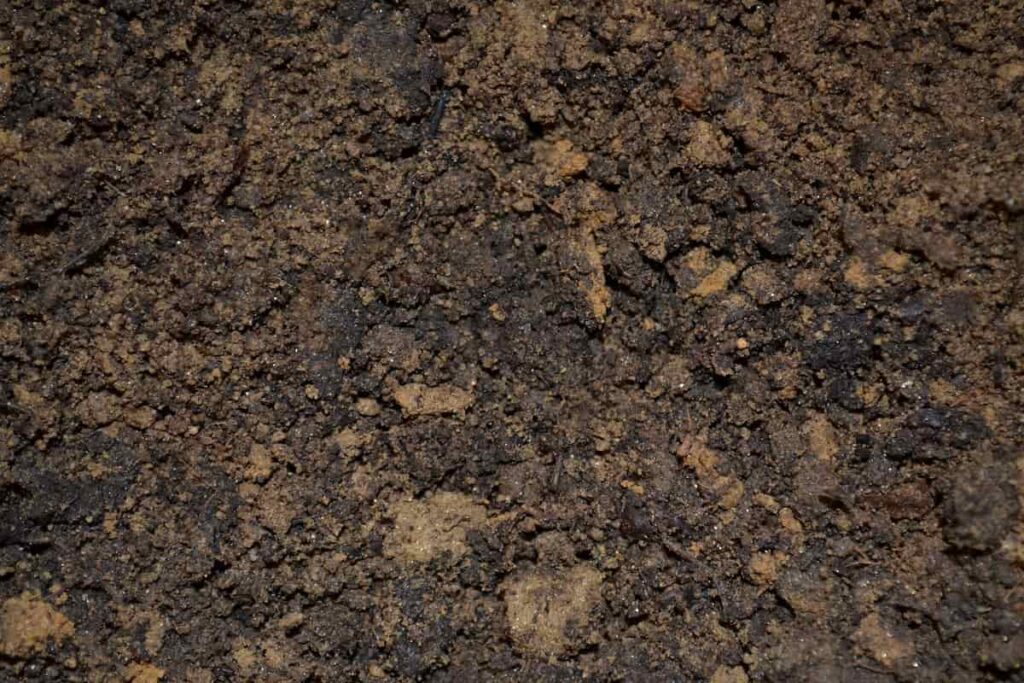
- Another important consideration is the nutrient content of the soil mix. Plants in containers need a regular supply of nutrients as they cannot access them from the ground. Adding some compost or manure to the mix is a good way to provide nutrients. This will also help to improve drainage and aeration.
- Finally, you should ensure that the soil mix’s pH is suitable for your plants. Most plants prefer slightly acidic soil, but some prefer alkaline conditions. You can buy pH testing kits from garden centers or online retailers.
Ingredients for preparing organic potting soil
Organic potting soil can be made at home using a variety of ingredients. The most important ingredient is organic matter from compost, manure, or other decomposing plant materials. Other necessary ingredients include sand, perlite, and vermiculite. These ingredients help to improve drainage and aeration in the potting mix. Compost is the most important ingredient in potting soil mixes.
It adds essential nutrients and helps to improve drainage and aeration. Manure is also a good source of organic matter and nutrients. It is important to choose a manure that has been composted or aged, as fresh manure can contain harmful bacteria. Other decomposing plant materials, such as leaves, straw, and grass clippings, can also be used as sources of organic matter.
Sand, perlite, and vermiculite are all minerals that help improve drainage and aeration in potting mixes. Sand is the largest particle size of the three ingredients and should make up about 20-30% of the total mix. Perlite is a lightweight volcanic rock that helps to aerate the mix and retains moisture well. Vermiculite is another lightweight mineral that aids drainage and aeration while providing nutrient retention.
Steps to make your organic potting soil for plants
Organic potting soil is easy to make at home and much healthier for your plants than store-bought mixes. To make your organic potting soil, you will need the following:
- Compost or well-rotted manure
- Peat moss or coco coir
- Perlite or vermiculite
- Sand (optional)
- Worm castings (optional)
To make the potting soil, mix the ingredients in a large container. If you use compost or manure, make sure it is completely decomposed before adding it to the mix. You can also add small sand to the mix to improve drainage. Worm castings are also a great addition to organic potting soil, but they are unnecessary.
Make your own inexpensive organic potting soil
Organic potting soil can be made home with just a few simple ingredients. All you need is some compost, coco peat or vermiculite, and organic matter such as leaves or grass clippings. This combination will give your plants the essential nutrients they need to thrive. Compost is full of essential nutrients that plants need for healthy growth. It also helps to aerate the soil and improve drainage.
Coco peat or vermiculite helps to retain moisture, making it ideal for planting in pots or containers. To make your potting soil, mix equal parts of each ingredient. Once combined, wet the mixture until it is damp but not soggy. Then, fill your pots or containers with the potting soil and plant your plants as usual.
In case you missed it: Growing Vegetables in Clay Soil: Plants, Crops, and Amending Tips
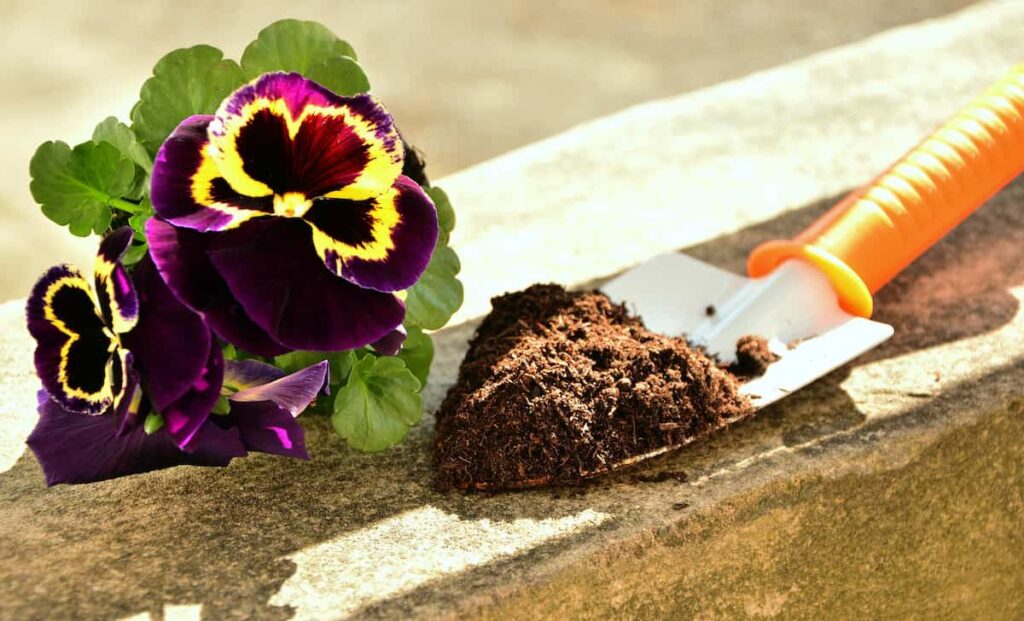
How to make potting soil for indoor garden plants?
The first is that you need to make sure the soil is sterile. This means that you need to bake it or boil water over it before using it. Also, remember to add some organic matter to the soil. This can be anything from compost to manure. This will help improve the soil quality and make it more fertile. It would help if you made sure the soil is well-draining. Indoor plants don’t like their roots sitting in water, so you must ensure the potting mix has good drainage.
You can achieve this by adding some sand or gravel to the mix. And finally, you need to ensure the potting mix is light and airy. Indoor plants like their roots to be able to breathe, so a lightweight potting mix is ideal. You can achieve this by mixing in some perlite or vermiculite. To make your potting soil mixture at home, you will need the following ingredients:
- Part compost
- Part coco peat or vermiculite
- Part perlite
Instructions;
- 1. Mix all of the above ingredients in a large container.
- 2. Fill your pots with the potting soil mixture, leaving enough room at the top for watering.
- 3. Water your plants regularly and fertilize them as needed.
Requirements to make potting soil mix ratio for plants
- When it comes to potting soil mix ratios, there is no one-size-fits-all answer. The ideal ratio depends on the plant type you are potting and the climate and conditions in which it will grow.
- Most plants prefer a slightly acidic potting mix with a pH between 6.0 and 7.0. You can achieve this by mixing equal parts peat moss and perlite or by using an all-purpose garden soil that has been amended with some peat moss or compost.
- If you are potting a plant that requires well-drained soil, such as cactus or succulents, you will need to use a lighter mix that contains more perlite or sand. On the other hand, if you are growing plants that prefer moist conditions, such as ferns or tropical plants, you will need to use a heavier mix that contains more organic matter.
- No matter what plant you are potting, add some slow-release fertilizer to the mix. This will provide your plant with the nutrients it needs to thrive.
In case you missed it: How to Prepare the Soil for Organic Farming: Methods, Tips, Techniques, and A Step-by-Step Guide for Beginners
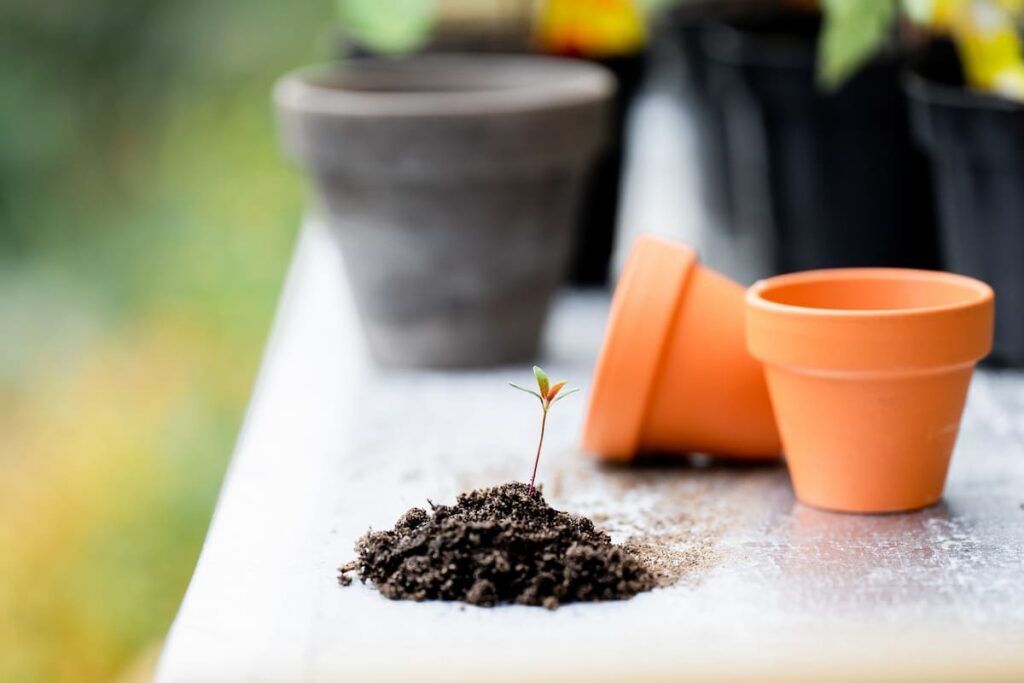
Things to remember before preparing your potting soil
- Potting soil is not the same as garden soil.
- Potting soil should be sterile to prevent the spread of disease.
- Potting soil should be well-drained to prevent waterlogging.
- Potting soil should be light and airy to allow roots to breathe.
- Potting soil should be nutrient-rich to support plant growth.
Features of good potting soil mix
There are different factors to consider when choosing a potting soil mix. Here are some of the essential features to look for:
Good drainage
Potting soil should drain well to prevent waterlogging and encourage root growth. Look for a mix that contains perlite or vermiculite to improve drainage.
Aeration
The mix should be porous to allow for good aeration and root respiration. Again, perlite or vermiculite can help with this.
Nutrient content
Your plants need nutrients to thrive, so choose a mix rich in organic matter. Compost or manure are good options.
pH level
The ideal pH level for potting soil is around 6.5-7.0. This can be achieved by adding lime to the mix if necessary.
Sterility
Choosing a sterile potting mix is essential to avoid problems with pests and diseases. A commercially produced mix should be fine, but you can also sterilize your mix by microwaving it or baking it in the oven before use
Simple steps to make potting soil at home
- One part organic compost
- One part garden soil
- One part perlite or vermiculite
- Water
In case you missed it: Home Hydroponic Farming for Beginners: Check How This Guide Helps to Start and Set up Soilless Garden from Scratch
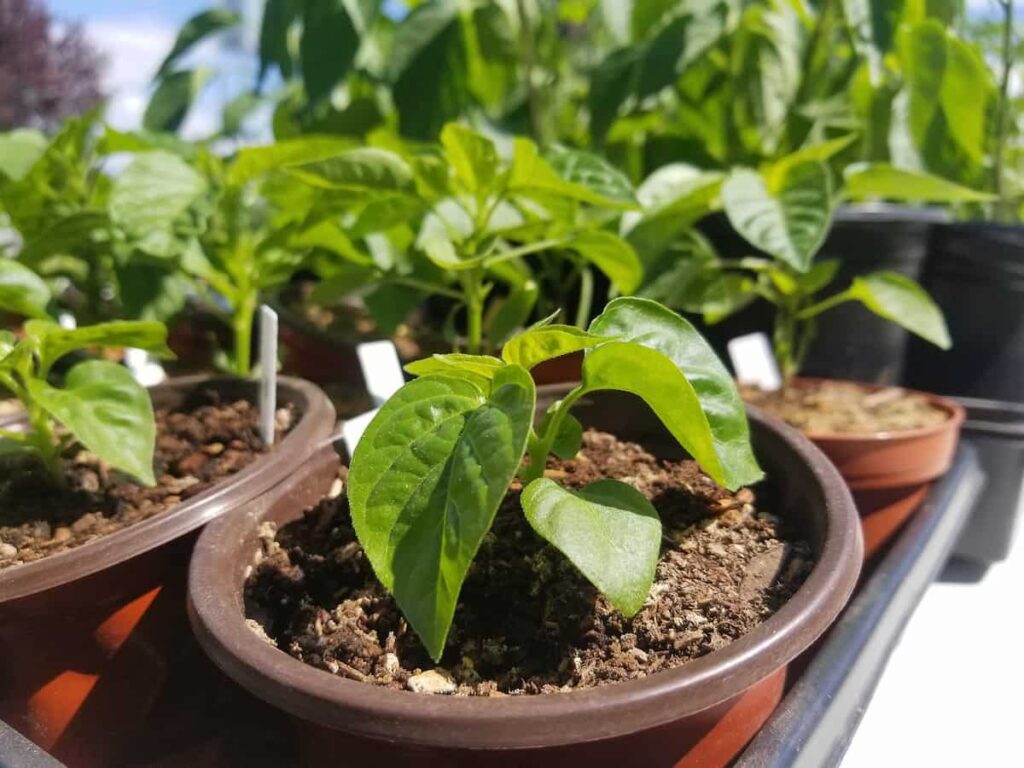
The first step is to mix the ingredients in a large container. Once they are mixed, add water until the mixture is moist but not soggy. If you add too much water, you can always add more perlite or vermiculite to absorb the excess moisture. Once your potting soil is mixed, it’s ready to use. You can use it to pot plants or start seeds in containers. To make potting soil at home, all you need is some organic matter, such as compost or aged manure, and some inorganic matter, such as sand or perlite.
The proportion of these ingredients will vary depending on the plant you’re growing and the container you’re using. A good starting point is two parts organic matter to one part inorganic matter. Once you’ve gathered your materials, mix them thoroughly and wet them until they’re evenly moist but not soggy. Bottom-watering your plants is an excellent way to keep the potting soil mix from getting too wet if you use a container with drainage holes. Now your potting soil is ready to use. Just fill your containers with the mixture and plant away.
Tips to make potting soil for different vegetable plants
- Different vegetables have different requirements for the type of potting soil they need. Some vegetables, such as tomatoes and peppers, need soil high in organic matter and drains well. Other vegetables, such as carrots and potatoes, need a more dense soil that holds moisture better.
- When choosing a potting mix for your vegetable garden, read the label carefully and choose one specifically designed for the vegetables you are growing. You can also ask a gardening center or local nursery for advice on which potting mix is best for your particular vegetable plants.
- When it comes to potting soil, there is no one-size-fits-all mix. The best potting soil for indoor garden plants will depend on the specific plant species you are growing.
- One important tip is to make sure your potting mix is well-aerated. Indoor plants need access to plenty of oxygen to thrive. An excellent way to ensure your potting mix is well-aerated is to add perlite or vermiculite to the mix.
- It is essential to make sure potting soil mix has good drainage. Indoor plants do not like sitting in waterlogged soil. You can add coarse sand or grit to your potting mix to improve drainage.
- Finally, it is important to add organic matter to your potting mix. This will provide nutrients for your plants and help improve the overall quality of the soil. Compost or well-rotted manure are good options for adding organic matter to your potting mix.
Peat moss potting soil for plants
Peat moss is an excellent plant potting soil because it is lightweight, absorbent, and nutrient-rich. Peat moss also has a high pH, which makes it ideal for plants that require acidic soils. To make peat moss potting soil, mix peat moss and perlite in equal parts. You can also add a small amount of sand to the mixture to improve drainage.
In case you missed it: Organic and Chemical Solutions to Get Rid of Potato Scab: Symptoms, Causes, and Treatment.
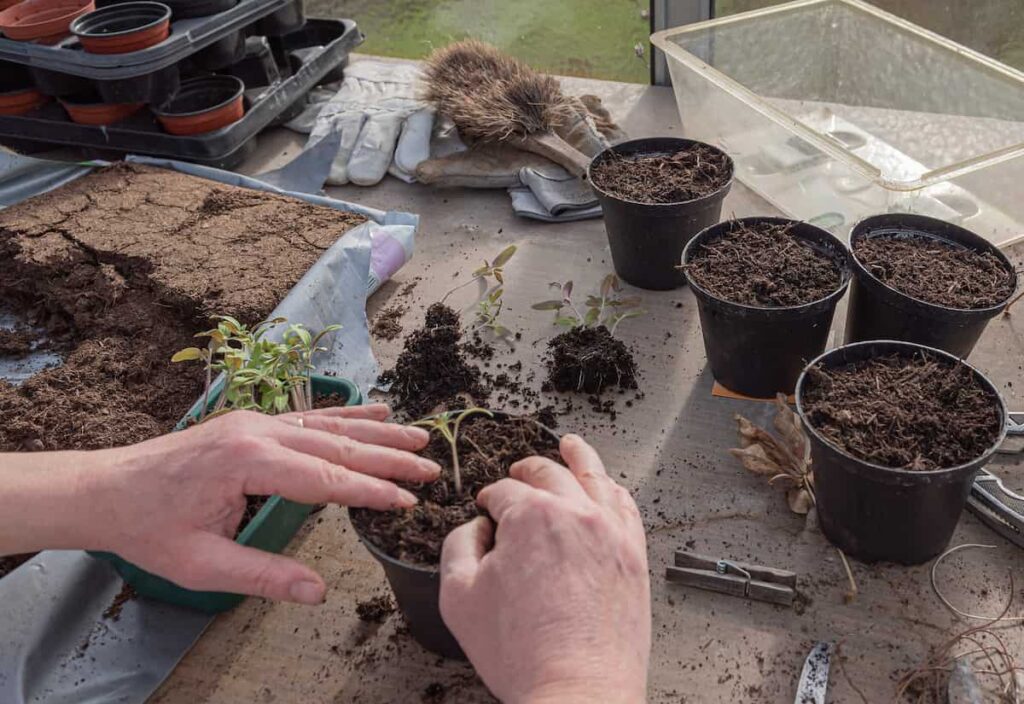
How to make potting soil with topsoil
- Topsoil
- Organic matter (compost, manure, etc.)
- Perlite or vermiculite
- Water
The first step is to mix the topsoil and organic matter. You can do this in a wheelbarrow or other large container. The ratio of topsoil to organic matter should be about 60/40. Next, add in the perlite or vermiculite. This will help improve drainage and aeration in the potting soil. The ratio of perlite to topsoil should be about 1:10. Finally, add water to the mixture until it is moist but not soggy. The water you’ll need will depend on the ingredients you use and the climate you live in. Once your potting soil is mixed, it’s ready to use.
Vermicompost potting soil for plants
Vermicompost potting soil is one of India’s best ways to make potting soil at home. It is a process that involves using earthworms to compost organic matter. This method of making potting soil is very popular in India because it is an efficient way to reduce waste and make nutrient-rich soil for plants. The first step in making vermicompost potting soil is to gather your materials. You will need earthworms, organic matter, and a container. The next step is to add the earthworms and organic matter to the container.
Make sure that the ratio of earthworms to organic matter is about 1:10. Once you have added the earthworms and organic matter, add water until the mixture is damp but not wet. The next step is to let the mixture sit for about two weeks so that the earthworms can do their work. After two weeks, you must strain the earthworms and compost them separately. The final step is to add vermicompost material to your planting pots or garden beds.
Neem cake potting soil for plants
Neem cake is a great addition to potting soil for plants. It’s a natural source of nitrogen, phosphorus, and potassium, essential nutrients for plant growth. Neem cake also helps to improve drainage and aeration in the soil, and it has antifungal properties that can help to prevent root rot. To make neem cake potting soil, mix equal parts of neem cake and compost. You can add sand or vermiculite to the mixture to improve drainage. For best results, use fresh neem cake that’s been finely ground.
Conclusion
Soil is one of the essential ingredients for gardening. It acts as a plant support system, helps anchor them in the ground, and provides essential nutrients for growth. Good quality potting soil can be hard to come by and expensive to purchase from a garden center or nursery. If you’re looking for a more cost-effective option, you can make your potting soil home using materials readily available in India. You can create a high-quality potting mix that will help your plants thrive. We will also provide a list of materials needed to get started.
- Economical Aquaculture: A Guide to Low-Budget Fish Farming
- 15 Common Planting Errors That Can Doom Your Fruit Trees
- How to Make Houseplants Bushy: Effective Tips and Ideas
- Innovative Strategies for Boosting Coconut Pollination and Yield
- Pollination Strategies for Maximum Pumpkin Yield
- The Complete Guide to Chicken Fattening: Strategies for Maximum Growth
- Natural Solutions for Tulip Problems: 100% Effective Remedies for Leaf and Bulb-Related Issues
- Revolutionizing Citrus Preservation: Towards a Healthier, Greener Future
- Natural Solutions for Peony Leaf and Flower Problems: 100% Effective Remedies
- Maximizing Profits with Avocado Contract Farming in India: A Comprehensive Guide
- Natural Solutions for Hydrangea Problems: 100% Effective Remedies for Leaf and Flowers
- The Ultimate Guide to Choosing the Perfect Foliage Friend: Bringing Life Indoors
- From Sunlight to Sustainability: 15 Ways to Use Solar Technology in Agriculture
- The Ultimate Guide to Dong Tao Chicken: Exploring from History to Raising
- The Eco-Friendly Makeover: How to Convert Your Unused Swimming Pool into a Fish Pond
- Mastering the Art of Delaware Chicken Farming: Essentials for Healthy Backyard Flocks
- 20 Best Homemade Fertilizers for Money Plant: DIY Recipes and Application Methods
- How to Craft a Comprehensive Free-Range Chicken Farming Business Plan
- Brighten Your Flock: Raising Easter Egger Chickens for Beauty and Bounty
- How to Optimize Your Poultry Egg Farm Business Plan with These Strategies
- Subsidy for Spirulina Cultivation: How Indian Government Schemes Encouraging Spirulina Farmers
- Ultimate Guide to Raising Dominique Chickens: Breeding, Feeding, Egg-Production, and Care
- Mastering the Art of Raising Jersey Giant Chickens: Care, Feeding, and More
- Ultimate Guide to Raising Legbar Chickens: Breeding, Farming Practices, Diet, Egg-Production
- How to Raise Welsummer Chickens: A Comprehensive Guide for Beginners
- How to Protect Indoor Plants in Winter: A Comprehensive Guide
- Ultimate Guide to Grow Bag Gardening: Tips, Tricks, and Planting Ideas for Urban Gardeners
- Guide to Lotus Cultivation: How to Propagate, Plant, Grow, Care, Cost, and Profit
- Agriculture Drone Subsidy Scheme: Government Kisan Subsidy, License, and How to Apply Online
- Ultimate Guide to Raising Araucana Chickens: Breed Profile, Farming Economics, Diet, and Care
- Bringing Hydroponics to Classroom: Importance, Benefits of Learning for School Students
- Ultimate Guide to Raising Polish Chickens: Breed Profile, Farming Economics, Diet, and Care
- Ultimate Guide to Raising Australorp Chickens: Profile, Farming Economics, Egg Production, Diet, and Care
- Silkie Chicken Farming: Raising Practices, Varieties, Egg Production, Diet, and Care
- Sussex Chicken Farming: Raising Practices, Varieties, Egg Production, Diet and Care
- Homemade Feed Formulations for Livestock: Discover Cost-effective Starter to Finisher Feed Recipes